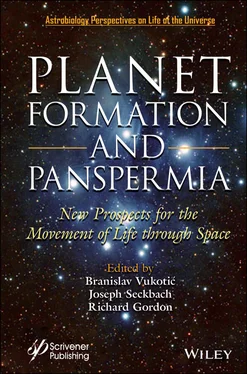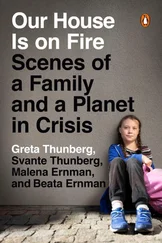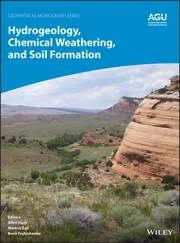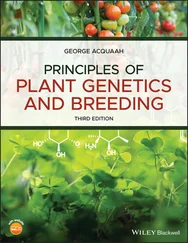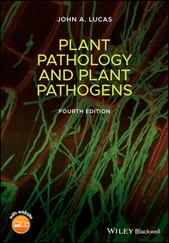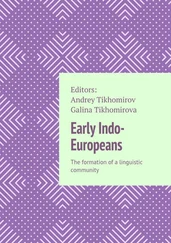Planet Formation and Panspermia
Здесь есть возможность читать онлайн «Planet Formation and Panspermia» — ознакомительный отрывок электронной книги совершенно бесплатно, а после прочтения отрывка купить полную версию. В некоторых случаях можно слушать аудио, скачать через торрент в формате fb2 и присутствует краткое содержание. Жанр: unrecognised, на английском языке. Описание произведения, (предисловие) а так же отзывы посетителей доступны на портале библиотеки ЛибКат.
- Название:Planet Formation and Panspermia
- Автор:
- Жанр:
- Год:неизвестен
- ISBN:нет данных
- Рейтинг книги:3 / 5. Голосов: 1
-
Избранное:Добавить в избранное
- Отзывы:
-
Ваша оценка:
- 60
- 1
- 2
- 3
- 4
- 5
Planet Formation and Panspermia: краткое содержание, описание и аннотация
Предлагаем к чтению аннотацию, описание, краткое содержание или предисловие (зависит от того, что написал сам автор книги «Planet Formation and Panspermia»). Если вы не нашли необходимую информацию о книге — напишите в комментариях, мы постараемся отыскать её.
Audience
Planet Formation and Panspermia — читать онлайн ознакомительный отрывок
Ниже представлен текст книги, разбитый по страницам. Система сохранения места последней прочитанной страницы, позволяет с удобством читать онлайн бесплатно книгу «Planet Formation and Panspermia», без необходимости каждый раз заново искать на чём Вы остановились. Поставьте закладку, и сможете в любой момент перейти на страницу, на которой закончили чтение.
Интервал:
Закладка:
The number density of life-bearing rocks per year can be assumed to be proportional to the star density, nL = γnt , with γ~15/yr [2.2]. Then, the typical diffusion timescale for life between stellar systems in the galactic bulge can be found by τ = 1/г and is
[2.2] 
If indeed life “colonizes” a suitable planet after transport, t Drepresents the typical timescale for the evolution of the fraction of inhabited planetary systems in the bulge. Adopting a realistic model for the stellar density n leads one to conclude that, all over the bulge, even a single inhabited planet might in principle spread life to all other suitable stellar systems in a time ~1 Gyr, much smaller than the age of the Galaxy [2.5].
While this is not a full-fledged examination of the problem, it gives some support to the idea that the galactic bulge could be seeded with biological material much more efficiently than the solar neighborhood. A possible hindrance, in this respect, is the effect of the radiation environment, which is certainly harsher near the galactic center than in the disk [2.4, 2.5], as well as the higher risk of potentially sterilizing events such as supernovae or tidal disruption events [2.35]. Even if life is not completely wiped out, ionizing radiation can still influence planetary habitability by enhancing the rate of atmospheric mass loss (see, e.g., [2.34]). Furthermore, it has been argued that a high level of ultraviolet radiation could suppress the formation of terrestrial planets via protoplanetary grain evaporation [2.1]. However, strong ultraviolet doses could also have beneficial effects, for example, by increasing the rate of prebiotic synthesis of biomolecular building blocks [2.25].
It should also be noted that there might be safer routes for microorganisms if the transfer happens indirectly, for example, through cometary bodies that are subsequently captured into a protoplanetary disc: this mechanism could in principle spread life through the Galaxy at a rate of ~5 kpc Gyr –1, covering the entire Galaxy in just a few Gyr [2.42], a short time compared to the age of the oldest stars in the Milky Way, 13.41 ± 0.54 Gyr [2.37].
2.3 Theoretical Consequences of Interstellar Panspermia
The status of present knowledge does not warrant a conclusive position on the actual feasibility of interstellar panspermia. However, the previous discussion, although sketchy and incomplete, suggests that we keep an open mind. Adopting an agnostic stance in light of poor evidence is the most rational course of action. At the same time, there is by now plenty of motivations to look more closely into the issue than was done in the past, both experimentally and theoretically.
In particular, even without committing to a specific scenario, it is interesting to explore what would be the theoretical consequences of considering interstellar panspermia as a possible ingredient when modeling the distribution of life on galactic scales. There are at least two aspects that should deserve close attention in future studies.
The first is to include a panspermia mechanism of some sort in studies of galactic habitability. The existence of a galactic habitable zone (GHZ) was first pointed out in pioneering studies almost two decades ago [2.14, 2.22]. While the concept was later refined and investigated in more detail, with varying degrees of overlap among different assumptions and conclusions (see, e.g., [2.36, 2.41, 2.11, 2.15, 2.16, 2.31]), the inclusion of panspermia in GHZ models is the exception rather than the norm [2.10].
So far, the conventional approach to GHZ has focused mainly on identifying locations (and epochs) where the formation of terrestrial planets can preferentially take place, and on assessing the risk for life in such locations due to possible nearby catastrophic events, such as supernovae explosions. Such an approach might turn out to be too conservative if interstellar panspermia can take place. One can envision the existence of a trade-off between sterilizing events and the possible survival of life by interstellar migration, such that some equilibrium point is reached, depending on the typical time-scales of such competing processes. In fact, as pointed out in [2.5], even galactic locations that traditionally were deemed too harsh to be habitable, such as the bulge, might benefit from the greater facility for life to leave its original abode, spreading elsewhere. Attempts to model the possible distribution of inhabited planets should take this aspect into due consideration, especially for the inner region of the Galaxy. More generally, any measure of the overall propensity of the Milky Way to host life should not overlook the fact that quick migration to safer locations could happen during the interval between extinctions events, thereby enlarging the boundary of the GHZ well beyond what has been deemed possible so far.
As a result, once panspermia is factored in, the qualitative features of the GHZ might be rather different from what is generally deduced. For example, the galactic bulge would have the highest number of potential locations for abiogenesis (provided that the formation of habitable planets is not too suppressed with respect to the disk) and, at the same time, the highest predisposition to panspermia. If we use as a reference the typical timescales of abiogenesis and biological evolution on Earth, there would be enough time for life to appear repeatedly on planets in the bulge between sterilizing events [2.5]. Thus, the bulge might be the most likely abode for microbial life (especially if high metallicity favours biochemistry) and act as a “source” of interstellar panspermia, seeding the outer regions of the galaxy, where conditions are more conducive to prolonged habitability and, therefore, to the evolution of complex organisms. This sort of radial gradient in life’s complexity, from the inner regions toward larger galactocentric distances, might even in principle be testable in the distant future.
In light of these considerations, it can be argued that, despite all the big uncertainties surrounding the problem, interstellar panspermia should, in principle, be treated on a par with other processes that are customarily included in GHZ models, but whose exact role is still unresolved, such as the biological effect of ionizing radiation or the dependence of terrestrial planet formation on stellar metallicity.
The second potentially important consequence of taking interstellar panspermia seriously has to do with the interpretation of future observations. Over the next couple of decades, there will be realistic prospects for detecting (or at least looking for) spectroscopic signatures of biological activity (“biosignatures”, for short) on nearby exoplanets [2.38, 2.17, 2.12, 2.26]. It has been suggested that the imprint of panspermia could be detected in the statistical correlation properties of exoplanetary biosignatures [2.21]. This is an interesting prospect, although definitely not around the corner. More relevant, in the near term, is how the possibility of panspermia can weaken the conclusions that can be inferred from the detection of one (or few) biosignatures in future exoplanetary surveys.
In [2.6], we used a Bayesian framework to show that even a single unambiguous detection of biosignatures in the vicinity of the Solar System, in a survey of the extent attainable in the next decades (i.e., less than 100 light years), would radically alter our prior credence on the frequency of life in the Galaxy, leading even an initially skeptical or pessimistic observer to conclude that inhabited planets are extremely common (of order 105 in the whole Milky Way). However, we also showed that allowing for the possibility of panspermia would substantially weaken such a conclusion.
Читать дальшеИнтервал:
Закладка:
Похожие книги на «Planet Formation and Panspermia»
Представляем Вашему вниманию похожие книги на «Planet Formation and Panspermia» списком для выбора. Мы отобрали схожую по названию и смыслу литературу в надежде предоставить читателям больше вариантов отыскать новые, интересные, ещё непрочитанные произведения.
Обсуждение, отзывы о книге «Planet Formation and Panspermia» и просто собственные мнения читателей. Оставьте ваши комментарии, напишите, что Вы думаете о произведении, его смысле или главных героях. Укажите что конкретно понравилось, а что нет, и почему Вы так считаете.
